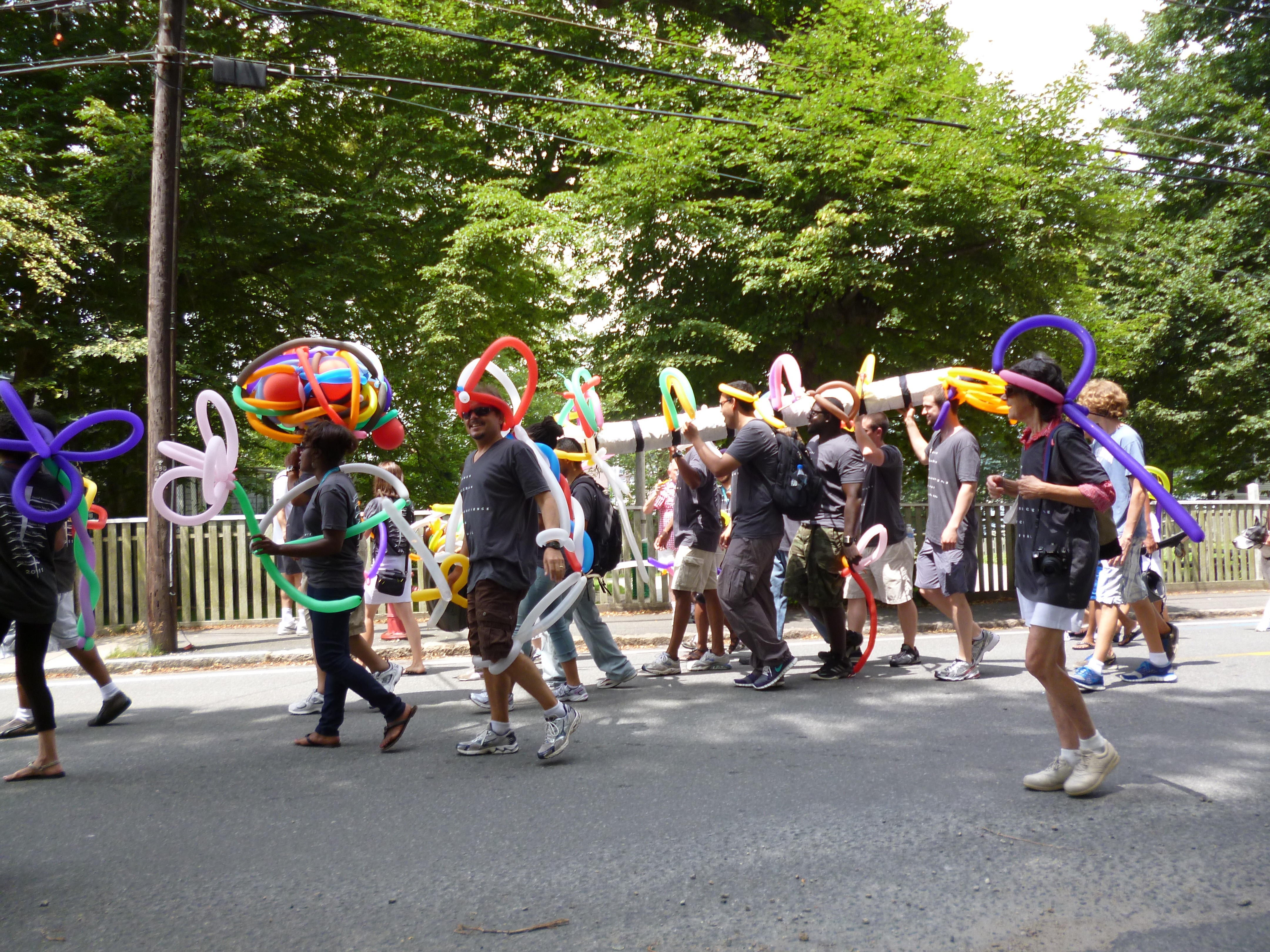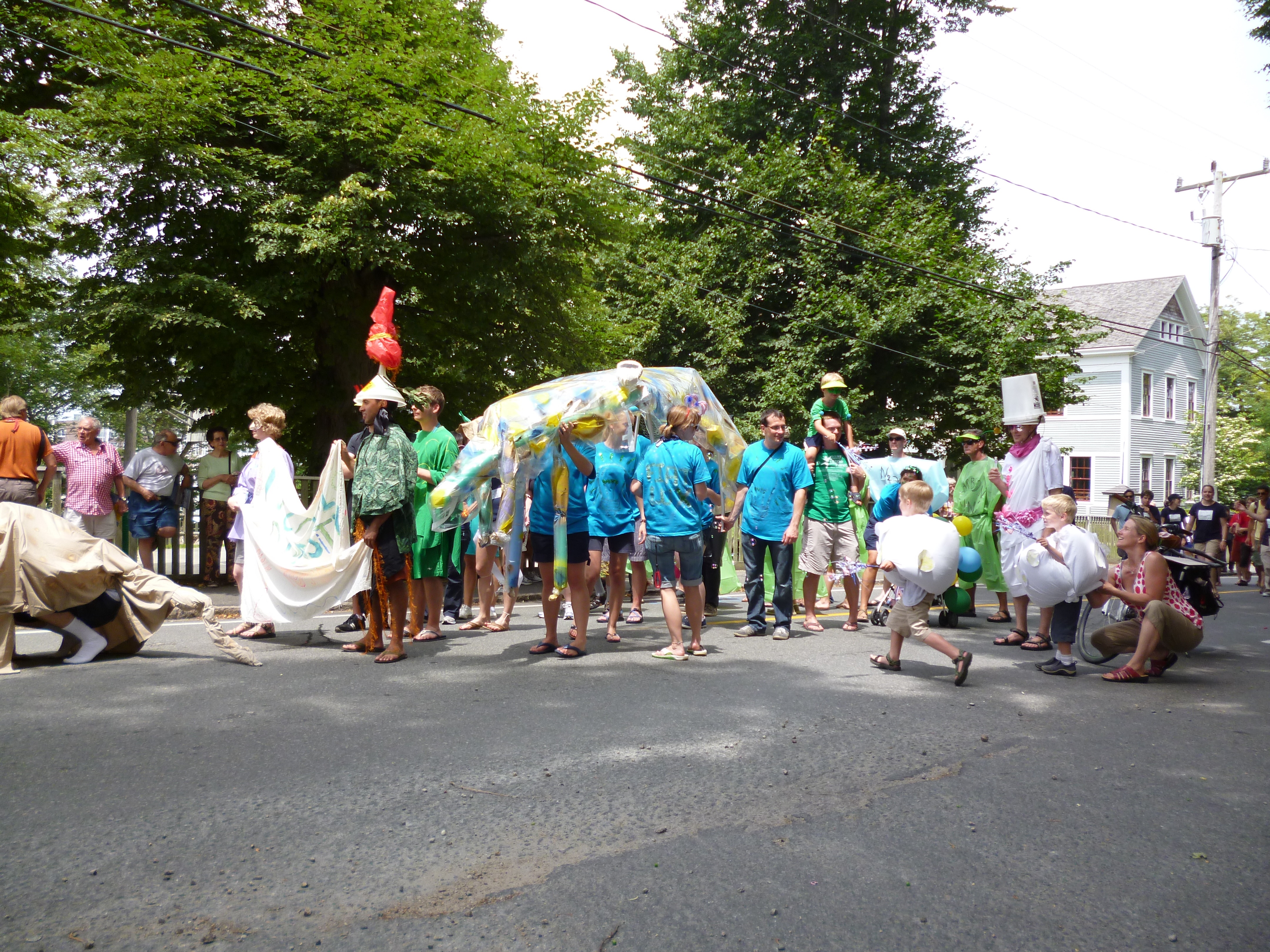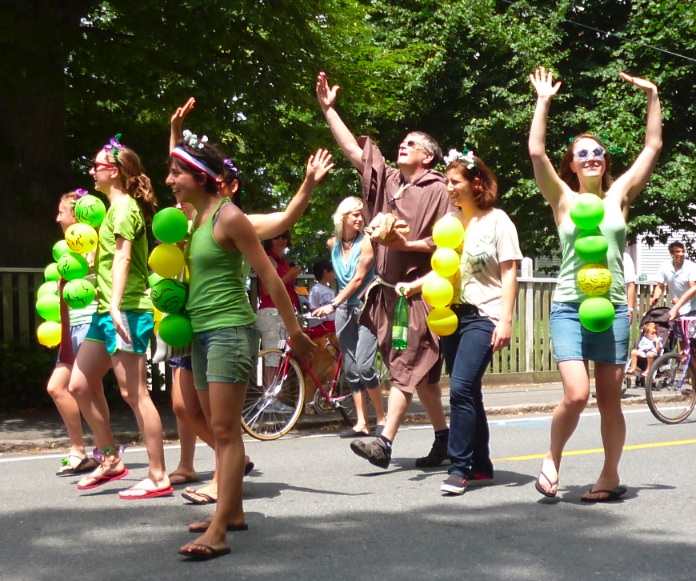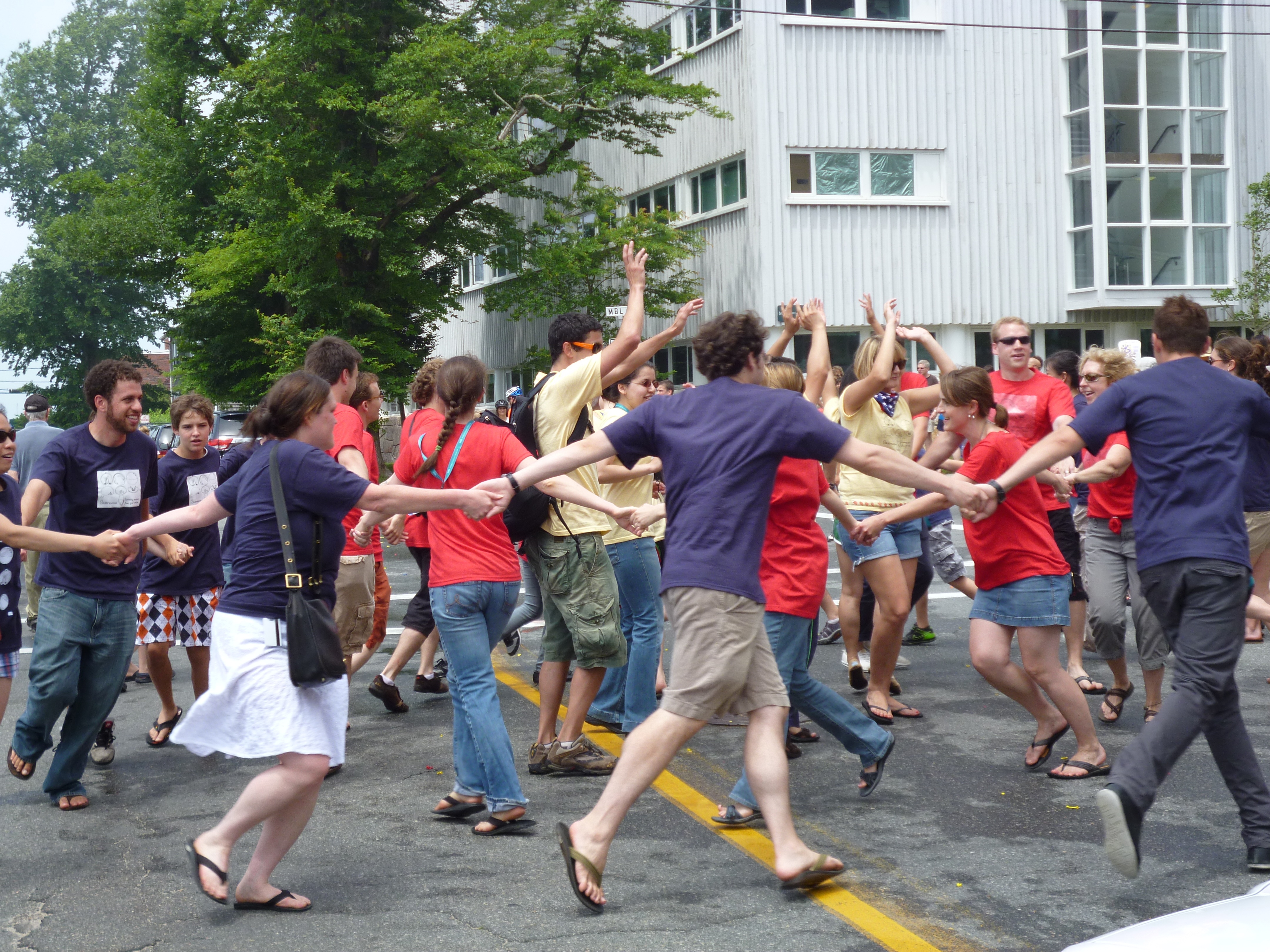From the Embryology 2011 Class: 4th of July Parade
Posted by David Gold, on 26 July 2011
Because Woods Hole, MA is home to both an Oceanographic Institute and the Marine Biological Laboratory, most of the people in this small town have some connection to the scientific community. As a result, the fourth of July festival in Woods Hole, MA is a celebration of uninhibited science-geekery.
Some of the highlights included the neurobiology students:
Microbial diversity, with their giant squid:
And my personal favorite, Mendel with his peas:
Bringing up the rear was our own Embryology course. We have a time-honored tradition of performing gastrulation through interpretive dance, which is quite possibly the best way to show gastrulation:
If that wasn’t self explanatory, let me help.
The three different colors of our shirts represent the three germ layers: blue for ectoderm, red for mesoderm, yellow for endoderm. In this particular display, we are performing gastrulation as it occurs in the sea urchin (that was obvious, right?) We started out as a blastula (a hollow ball of cells), and then invaginated to create the three layers of tissue. Finally, some of the mesoderm cells start to form spicules, which create the skeleton of the urchin.
Sea urchins were only the beginning. We also performed gastrulation as it occurs in frogs, nematode worms, fruit flies, as well as chaotic cleavage (like you find in some sea anemones and jellyfish) and chicken neurulation for good measure. The parade lasted less than an hour, and only traveled a few blocks, but we got as many gastrulations as we could in there.
If you’re ever in the area during the fourth of July, I highly recommend you check out the Woods Hole parade. Their were a lot of people, and a lot of energy (including an epic water gun fight). You can get a more detailed explanation of gastrulation and some more pictures over at the blog BioBlueprints.






 (4 votes)
(4 votes)